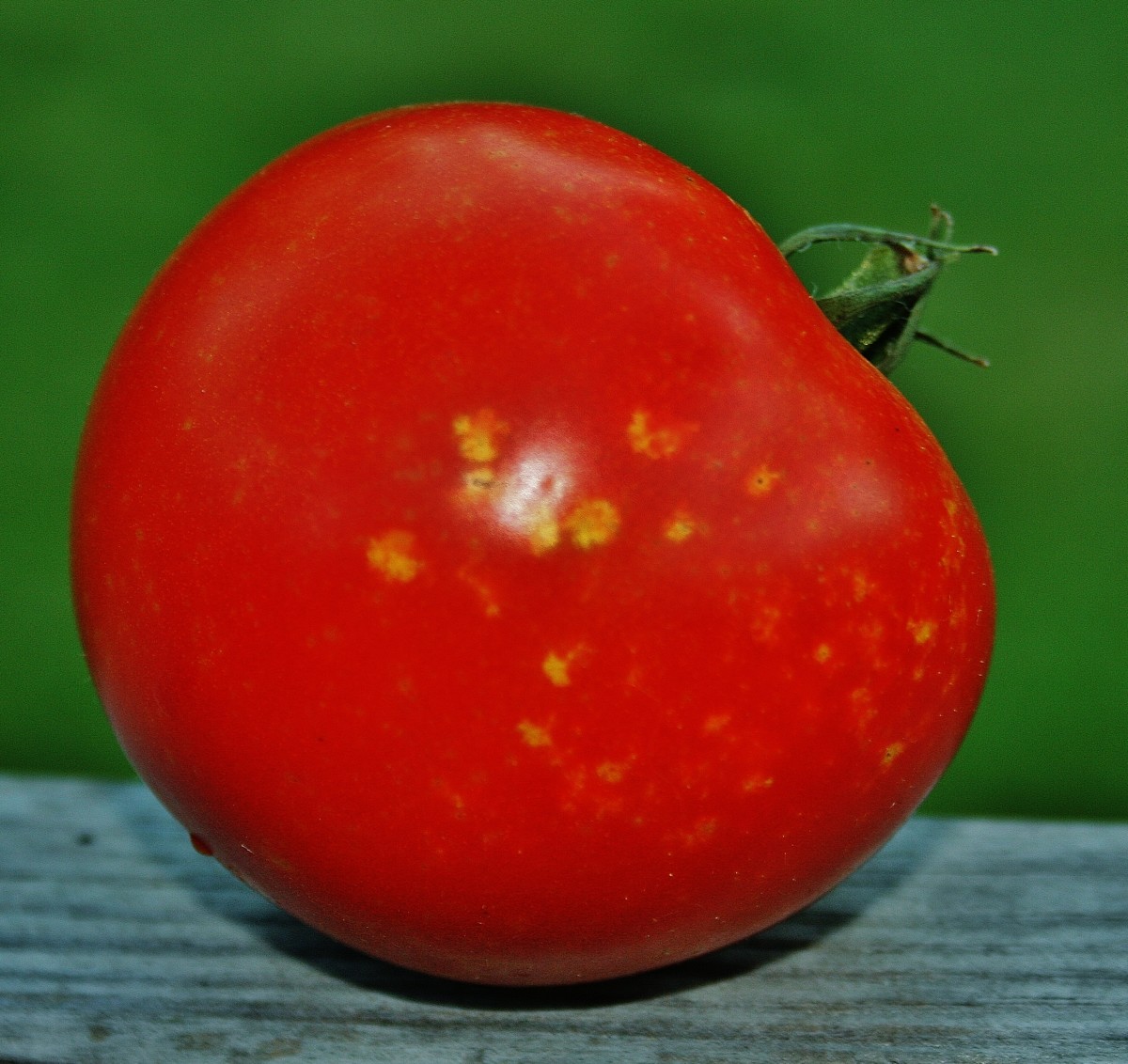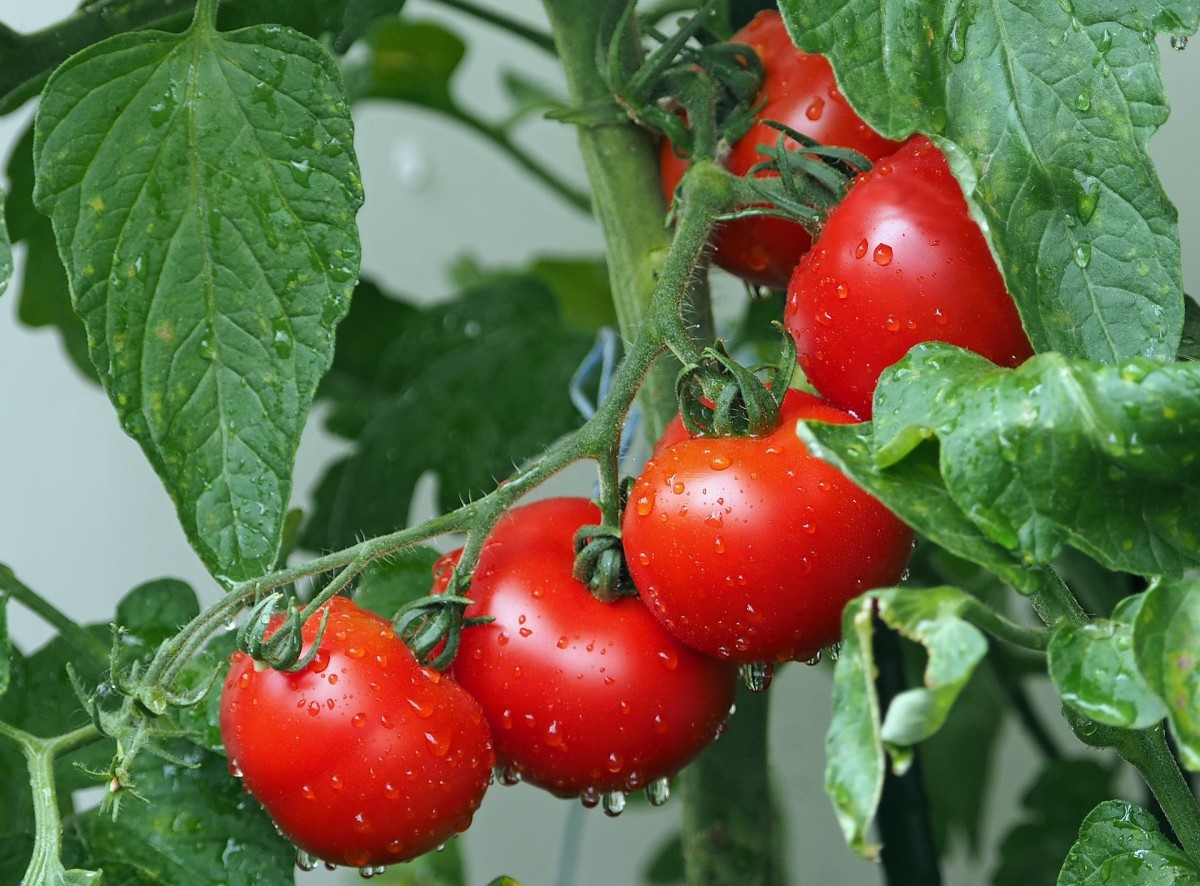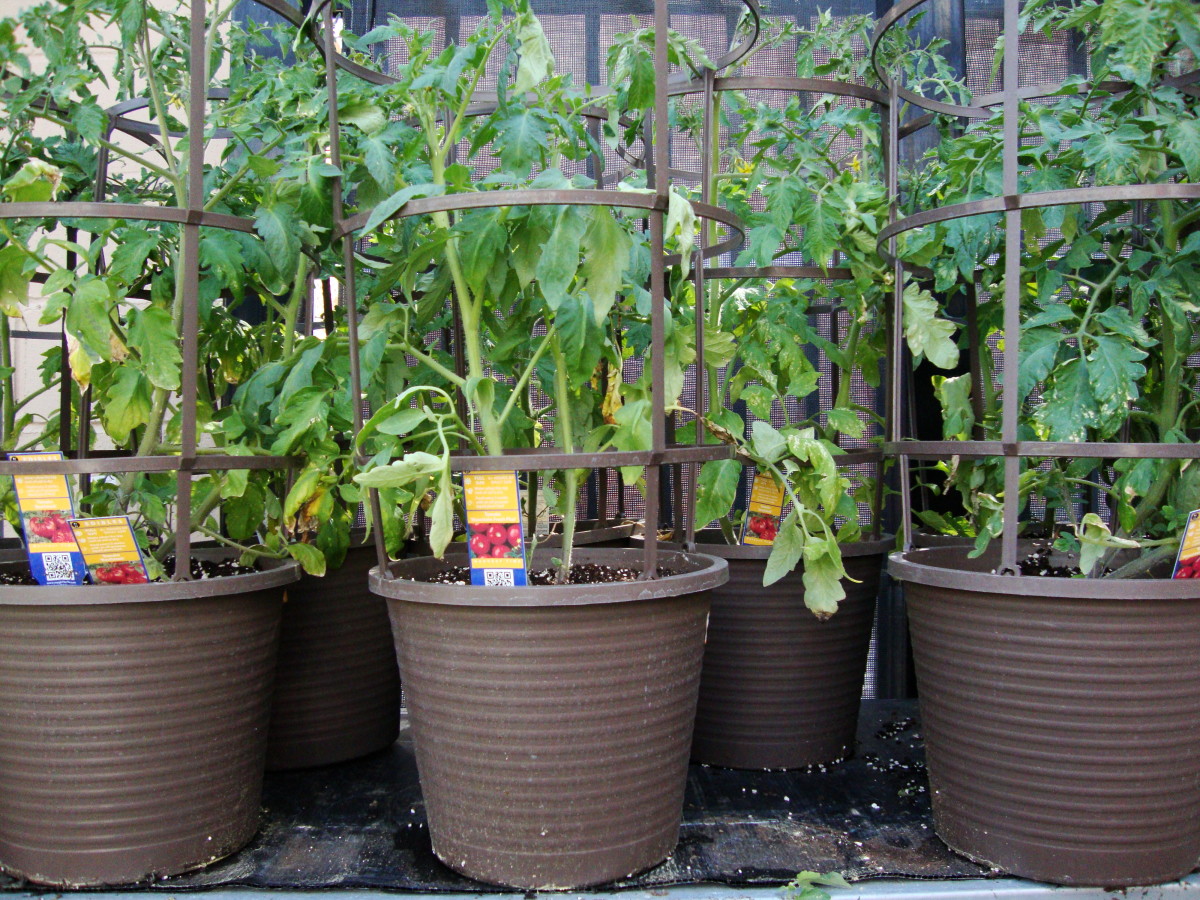- HubPages»
- Home and Garden»
- Gardening»
- Planting Vegetables
Studies Show Pruning Produces Bigger Tomatoes But Why?
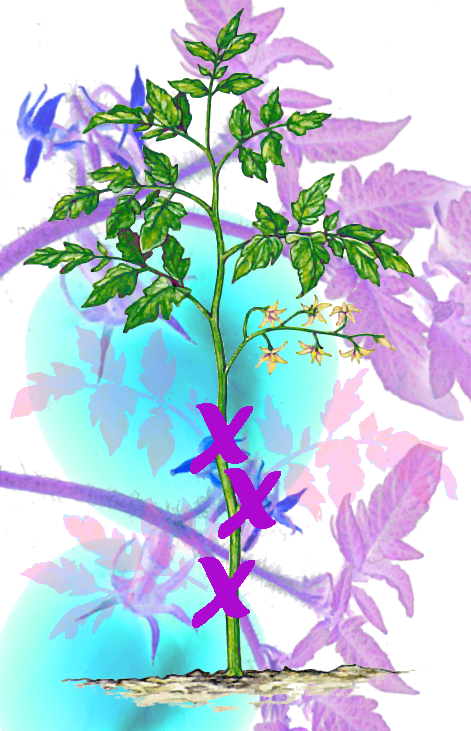
Practical Explanation
Practical articles about growing tomatoes invariably explain that more nutrients reach developing tomato fruits, if we remove some of a tomato plant's newly arising branches. Developing fruits subsequently grow bigger than if we had allowed those newly arising branches to mature. This explanation appears reasonable, but it usually requires that we accept it on faith. Given the frequency with which opinions on the subject vary, I started questioning this sage advice: Does pruning produce bigger tomatoes, in fact?
I discovered formal studies that clearly demonstrate that the answer to this question is "YES" – pruning DOES, in fact, produce bigger tomatoes.
Formal Studies
(arranged by ascending date)
[1] Vincent F. Lawson [Iowa State University] (2000), Tomato Cultivar Trial And Pruning Observation.
http://www.public.iastate.edu/~taber/Extension/Progress%20Rpt%2000/tomato.pdf
"The most striking difference at harvest was larger fruit size (.69 lb vs. .55 lb) from pruned plots. However, pruning also reduced the number of fruit harvested by 32% and total marketable weight by 15%."
"So why prune and stake? The obvious advantage, if desired, would be to produce larger, more uniformly sized fruit."
[2] Elizabeth Maynard [Purdue University] (2001), Fresh Market Tomato Cultivar And Pruning Evaluation For Northern Indiana, 2000, PURDUE UNIVERSITY PURDUE E-PUBS, PURDUE FRUIT AND VEGETABLE RESEARCH REPORTS.
http://docs.lib.purdue.edu/cgi/viewcontent.cgi?article=1043&context=fvtrials
"The main benefit of pruning is larger fruit size."
"The main drawback of pruning is reduced yield."
[3] T. T. Ghebremariam (2004), Yield And Quality Response Of Tomato And Hot Pepper To Pruning [Thesis submitted in partial fulfillment of MSc degree, Plant Production and Soil Science Department, University of Pretoria, Pretoria, South Africa].
http://upetd.up.ac.za/thesis/available/etd-02082006-125505/unrestricted/00dissertation.pdf
"All the truss pruning treatments in tomato increased the diameter of the fruit."
[4] Abdolali Hesami and others (2012), Effect Of Shoot Pruning And Flower Thinning On Quality And Quantity Of Semi-Determinate Tomato (Lycopersicon Esculentum Mill.), NOTULAE SCIENTIA BIOLOGICAE, 4(1):108-111.
http://www.notulaebiologicae.ro/index.php/nsb/article/view/7179/6600
"... it [pruning] improves light penetration inside the plant canopy and increases photosynthesis efficiency and so fruit yield."
"Effect of shoot pruning on fruit size was significant."
[5] E. N. Sowley and Y. Damba (2013), Influence Of Staking And Pruning On Growth And Yield Of Tomato In The Guinea Savannah Zone Of Ghana,
INTERNATIONAL JOURNAL OF SCIENTIFIC & TECHNOLOGY RESEARCH 2(12):1-3-108.
http://webcache.googleusercontent.com/search?q=cache:hKhbvNMnJ70J:www.ijstr.org/final-print/dec2013/Influence-Of-Staking-And-Pruning-On-Growth-And-Yield-Of-Tomato-In-The-Guinea-Savannah-Zone-Of-Ghanahttp://hubpages.com/hubtoolpdf+&cd=1&hl=en&ct=clnk&gl=us
"... pruning of tomatoes gave bigger fruits than unpruned."
What Are Nutrients?
After confirming that pruning produces bigger tomatoes, I wanted to clarify exactly what people are talking about when they use the word, "nutrients". Towards this end, I uncovered the following table:
Nutrients Required By Tomatoes
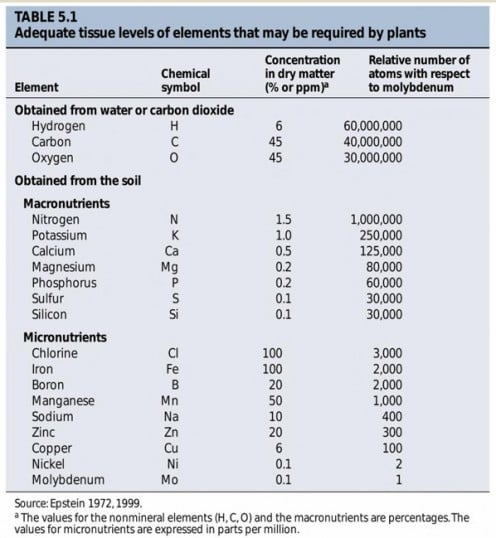
Wikipedia ... adds cobalt and aluminum to this list.
I also believe that, in discussions about pruning, "nutrients" usually refers to byproducts of photosynthesis (simple sugars) permeating a tomato plant's sap running through its veins. There appears to be a confusion of terminology in these discussions, as I read them.
The word, "nutrients" sometimes seems to mean substances from the above table, and other times products of photosynthesis. At any rate, the tomato plant circulates substances from both these categories, in accordance with the same fluid dynamic principles. Photosynthesis REQUIRES the basic individual nutrients in order to produce the more complex nutritional substances that enable tomato plants to survive.
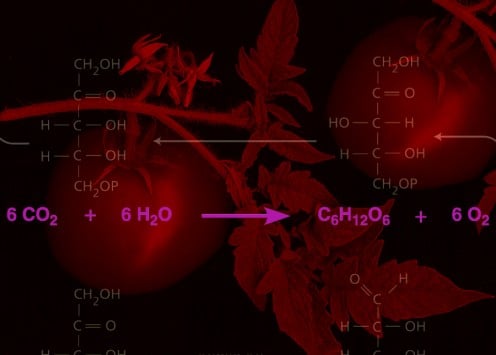
Why Pruning Works ... For Dummies
Here I attempt an explanation, but I also issue an invitation to readers to share their own research, references, knowledge, and insight concerning why pruning works. Use the COMMENTS section following this article to add specifically relevant input or to explain any misconceptions that you think I might have.
The Explanation
A garden with properly prepared ground, adequate sun exposure, and ample water supply provides an abundance of basic nutrients for growing tomato plants. There is, however, within the tomato plant itself ONLY a portion of this nutritional abundance available at any given time, since the tomato plant can hold ONLY so many nutrients at once.
There is NOT an endless, spontaneous AVAILABILITY of nutrients EVERYWHERE within the plant, even though there IS effectively an endless SUPPLY SOURCE. Consequently, the tomato plant responds to a given concentration of nutrients already within its whole structure.
A tomato plant, thus, engages in a perpetual balancing act with respect to how it distributes AVAILABLE nutrients, as it hogs nutrients in one location, while limiting nutrients in another location, all without starving any one location to death. Older FRUITS have greater strength (or potential) than newly developing branches to pull out these nutrients. This is just fact. If the newly developing branches were not there, then a greater portion of nutrients would go to the older fruits to fulfill their maximum potentials to convert nutrients to maximum growth.
The first fruits are always ready to grow bigger, if left alone.
New branches that start to compete with the first fruits, thus, get only a few nutrients in order to grow. Older fruits get the greater share, but not as many as their full potentials could convert to larger fruits, if not for those new branches. Meanwhile, because of their smaller shares of nutrients, new branches also produce smaller structures that eventually lead to smaller fruits. Consequently, a situation develops where the first dominant fruits cannot get all the nutrients they could use to get bigger, and new branches get only enough nutrients to produce a smaller amount of growth that leads to smaller fruits.
"Suckers" Are Survivors
Gardeners who practice pruning call new young branches on their tomato plants "suckers", because, from a human standpoint, new branches suck nutrients away from developing fruits. While generally true, this is only part of the story, because older fruits are the first suckers that limit nutrient supply to later fruits, which cause these later fruits to grow smaller. Consequently, FRUITS are the biggest suckers, and new branches are doing the best they can, because they have to use a limited share of nutrients dictated by the fruits.
If the tomato plant could talk, then it would NOT call its newly growing branches "suckers", but rather "survivors".
When you think about it, producing more "somethings" of a smaller size is a better survival strategy than producing fewer "somethings" of a larger size, since a greater population size could withstand greater casualties.
Six small tomatoes that collectively outweigh three large tomatoes would have a greater guarantee of species longevity, if these were all the tomatoes that existed. A loss of three small tomatoes would still leave three small tomatoes, while a loss of three large tomatoes would leave a species totally annihilated.
The desire for big tomatoes, then, is a human aesthetic preference, and this is why growing tomatoes, besides being a science, is also a sort of art. The trick is to trim off just enough new growth at the right time and right location on the plant, to allow optimal sun exposure for an optimal amount of foliage, to produce an optimal total yield of fruits that are an optimal size.

